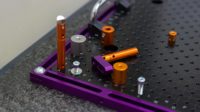The International Energy Agency expects at least 145 million electric cars, buses, vans, and heavy trucks on the roads by 2030. This surge in demand presents quality assurance challenges for electric vehicle (EV) manufacturers. These challenges include component size, tolerance specifications, and new manufacturing processes requiring increased sampling for process control, contributing to an overall increase in quality requirements. Applying Geometric Dimensioning and Tolerancing (GD&T) to electric motor production supports consistent quality control by providing a standardized framework for defining and communicating tolerances, geometric requirements, and functional specifications.
However, implementing GD&T using 2D drawings and manual measurement tools is not the most optimal method available to support the expected demand for EV production. Manual measurement tools provide limited information, making it an arduous process to collect enough measurements to verify GD&T specifications. In addition, comparing manual measurement results to 2D paper drawings can cause misinterpretation and create measurement variation, errors, and bottlenecks. Modern manufacturing requires a modern GD&T solution capable of helping EV manufacturers streamline and scale quality assurance processes to meet demand.
Model-Based Definition (MBD) offers a modernized approach to implementing GD&T into electric motor production using 3D models instead of traditional 2D drawings. Containing Product Manufacturing Information (PMI), including GD&T specifications embedded directly into the 3D model, MBD establishes a single source of truth, mitigating the risk of misinterpretation and discrepancies between the design, manufacturing, and inspection stages by clearly communicating the design intent and quality requirements.
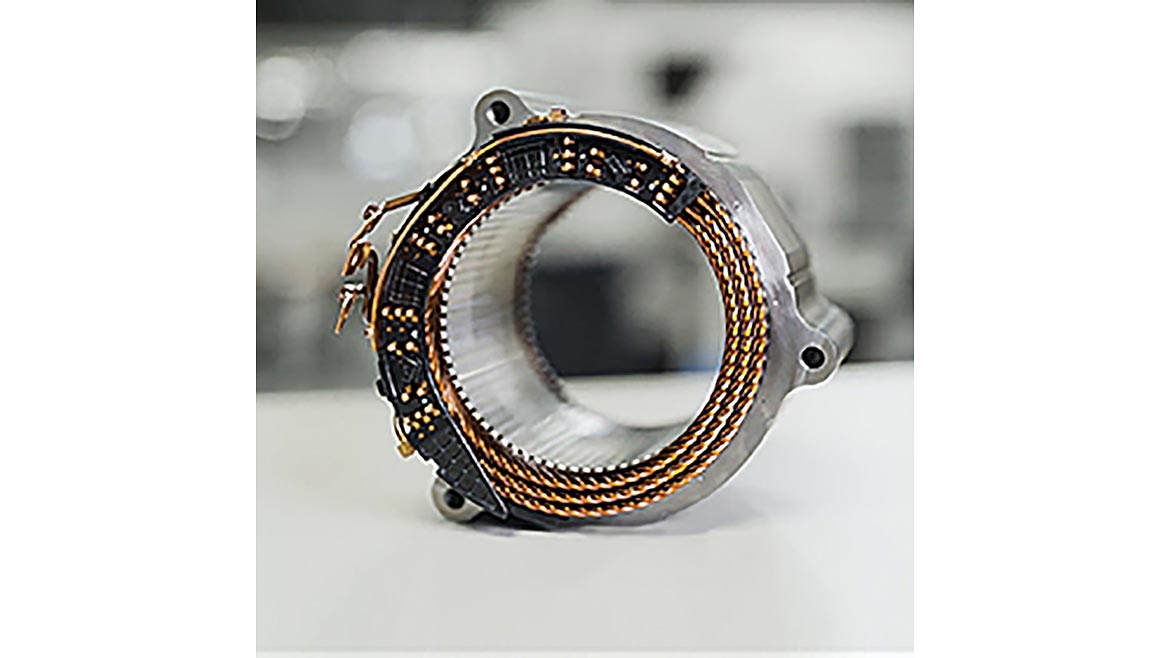
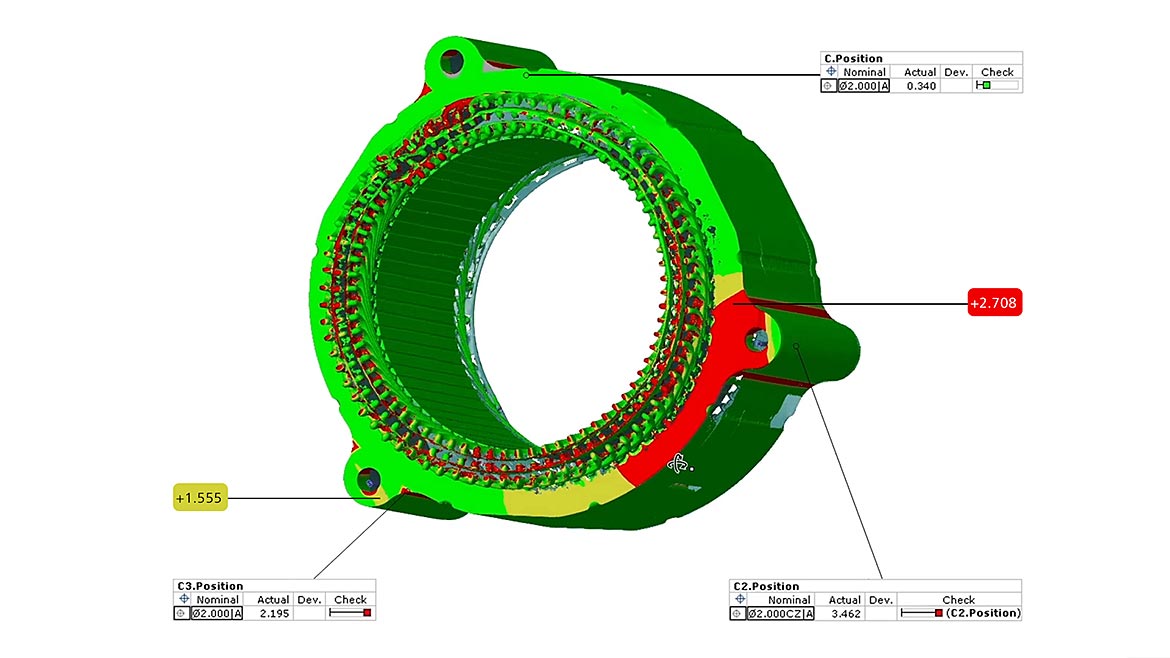
In place of traditional metrology tools, using an automated blue light 3D scanner to collect measurement data for verification further streamlines quality assurance for electric motor components through digitalization. For example, in modern electric motors, the electric conductors are assembled, bent and welded from solid copper wires to make a component known as a hairpin. The resulting geometries are challenging but necessary to inspect to ensure they conform to the correct specifications.
Hairpin-stator assemblies consist of more than 100 integrated hairpins that must be inspected accurately. Performing dimensional inspection to check that these components meet GD&T specifications is challenging with tactile measurement methods that must touch the part because these shiny, coated, and flexible components are touch-sensitive parts that deform easily. However, automated blue light 3D scanning is a high-precision noncontact solution for inspecting hairpins and other electric motor components. By automatically digitizing complete stators, single hairpins, and multiple hairpins simultaneously, EV manufacturers can quickly gain access to complete 3D measurement data from these components. Advanced 3D metrology software uses this data to generate an accurate geometric digital twin that can be used with MBD/PMI models to check GD&T specifications of electric motor components, including the complete hairpin-stator assembly, rotor and other parts requiring precision manufacturing.
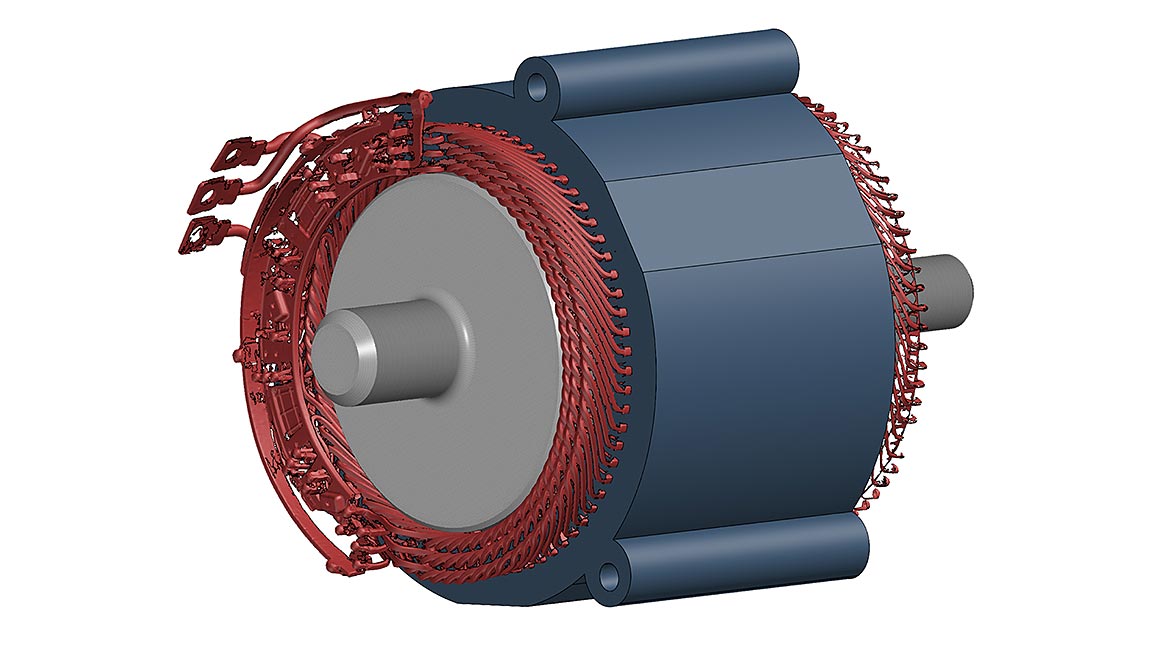
While GD&T from a drawing can be manually input into 3D metrology software for use with data from a 3D scanner, embedding it into the CAD through MBD/PMI prevents an operator from creating incorrect GD&T checks. This method also drastically shortens the time required to inspect a new part, further enhancing the advantages of inspection with data from a blue light 3D scanner. The fast and accurate digitalization of electric motor components facilitates compatibility with modern design methodologies like MBD/PMI, supporting GD&T implementation that increases dimensional inspection efficiency. Other aspects of electric motor production also benefit from this digital engineering strategy.
Additional advantages include:
- Managing Dimensional Variation: Dimensional variation of electric motor components makes it challenging to maintain tolerance requirements, especially in high-volume production. GD&T can be used to define the allowable variation of these components. With data from an accurate 3D scanner, EV manufacturers can identify non-conformance and adjust manufacturing processes accordingly.
- Interchangeability and Alignment: Hairpin-stator assemblies and other EV motor components comprise multiple components that must fit together seamlessly. GD&T allows engineers to define feature relationships, ensuring proper alignment and interchangeability. With accurate 3D measurement data, EV manufacturers can verify that the design requirements have been met according to what is communicated within the MBD model, seamlessly enhancing assembly efficiency and reducing costly rework.
- Optimized Electric Motor Performance: The performance of electric motor components relies greatly on dimensional accuracy and alignment. Engineers can use GD&T to specify functional requirements such as concentricity, perpendicularity, and positional tolerances. Adhering to these specifications minimizes vibration, noise, and energy losses, enhancing the performance and durability of electric motor components.
- Improving Communication: MBD establishes an authority that anyone involved in the process, from engineers to stakeholders, can refer to in real time, eliminating the chance of misinterpretation of GD&T specifications or other critical aspects of design intent. Likewise, with accurate data from a blue light 3D scanner, manufacturers can also access a high-fidelity digital twin to validate design, processes, and parts quickly, thus alleviating confusion and supporting effective problem solving.
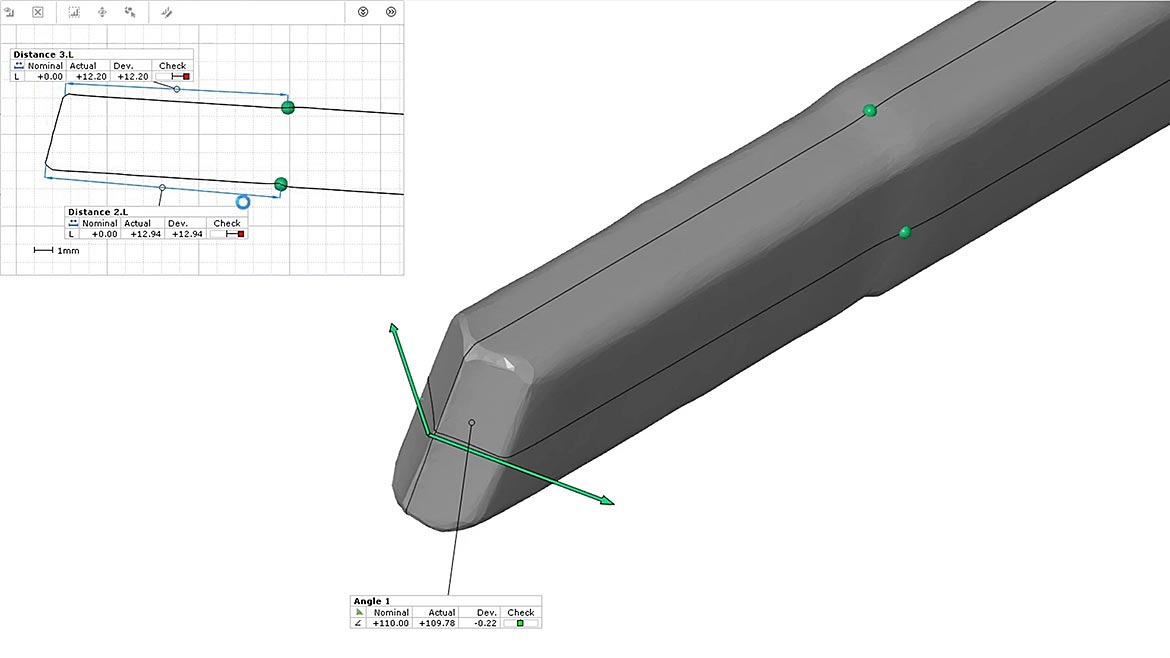
There are also advantages to complete data capture specific to features and areas of the electric motor. Below are a few inspection advantages specific to the hairpin assembly, rotor, and stator:
Flatness: Evaluating the flatness of the end faces of the stator housing is critical. In the manufacturing process, the outer layers of the laminated sheet metal package may be bent upwards or displaced if there is a burr or an impurity pressed within the sheet, which causes deformation of the joining points on the sheet metal layout. Data visualization within advanced 3D metrology software allows the flatness to be evaluated across the entire surface, immediately revealing the areas failing to meet the quality requirements.
Cylindricity: The inner diameter of the stator and rotor is a vital characteristic of electric motors that can be examined within advanced 3D metrology software. The fit between the stator and rotor is critical to ensure the efficiency of the electric motor. With accurate digital twins derived from 3D scan data, the rotor and stator can be virtually assembled to verify the distance between the two components. Then the inside cylinder can be inspected for cylindricity or deviation from perfect form. Manufacturers can visualize the alignment or misalignment of individual sheets in the sheet metal package and understand where cylindricity is worsening or meeting specifications.
Diameter: Inspection of the hairpin basket is crucial for good motor function. This component may cause issues during subsequent assembly and operation if bent inwards or outwards. Within advanced 3D metrology software, an accurate digital twin of the hairpin basket allows manufacturers to visually inspect the component’s details and other aspects, such as the basket’s maximum inscribed diameter.
Curves: Insulation paper prevents damage to the coating on the hairpins. The paper protrusion must be analyzed accurately to help detect and prevent problems later during assembly. Measurement data from a blue light 3D scanner offers detailed analysis to reproducibly measure the paper protrusion and even identify the curve-based progression of the paper protrusion.
Implementing and communicating GD&T specifications through MBD/PMI offers many advantages for EV manufacturers. Using complete, accurate data from a blue light 3D scanner to verify these requirements creates a standard and repeatable practice that increases quality assurance speed and efficiency. These digitalization strategies will help EV manufacturers reach their production goals, even as electric motor technologies develop and quality requirements increase.


